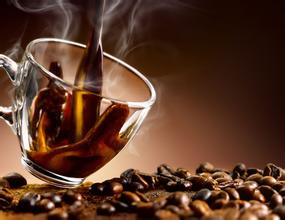Introduction to Dominica Santo Domingo Coffee Flavor Manor with soft floral aroma
Variety Kind
Kaddura species are increasing day by day
Hit hard by the hurricane in 1998, countless losses were lost everywhere, so the local area generally began to plant Kaddura species with lower tree height and higher harvest. Although Baraona still has Tibica coffee, its harvest has been greatly reduced because of the annual hurricane damage.
Planting Cultivation
The climatic conditions are no different from those of the highlands.
The climatic conditions in Dominica are similar to those in the higher elevations of Central America. The low altitude areas began to harvest in September, while the highland areas with elevations of 600-1500m began to harvest in February-April of the following year. Most of them are refined by washing.
High-profile place of origin Farm
Pepe farm
PEPE
Grow coffee on the premise of protecting the environment
After peeling the empty shell of coffee, compost is used to return it to the soil, and the drainage during purification is also purified. All production processes are carried out on the premise of maintaining the natural environment.
Location: Harrawakoa area
Average altitude: 1000-1500m
Cultivated varieties: Kaddura et al.
Refining method: washing type
Coffee characteristics
The coffee beans, which are carefully refined by washing, have a soft aroma like floral aroma. Among the many coffee producing countries in the Caribbean, the coffee beans produced in Dominica have the most representative coffee aroma.
Aroma Flavor
Two major characteristics derived from planting areas
Coffee in Dominica has two main characteristics, which vary according to the region and variety of coffee produced. Tibica coffee, produced in the main producing area of Baraona, has a soft taste and light aroma peculiar to the Caribbean. The highland coffee in Siwao in the central mountain area has a strong taste-the two producing areas have their own characteristics located in the Jarabacoa region near Siwao, and have the largest farm in Dominica-Ramirez Manor (RamirezEstates), which mainly grows Kaddura varieties, and most of the coffee produced is sold to Europe, the United States and other Western countries and regions. Ramirez Manor itself produces coffee in an environmentally friendly way.
Coffee in Dominica is graded in sizes such as AA and AB, but it is classified as top grade by coffee from highlands such as Sivao and Baraona. Both coffees are harvested from February to May, and the origin of Tibika can be traced back to water-washing refining, starting with coffee trees originally planted in Martinique. These trees were planted by Dominicans as far back as the early 18th century, so Dominica began growing coffee as early as that time. For a time, the Caribbean was almost synonymous with coffee production, but in recent years Cuba, Haiti and other places have been severely damaged by Hurricane George, and later planted Kaddura species with lower numbers and higher harvests.
Dominica coffee is mainly produced in areas such as Cibao in the Central Mountains, the Caribbean and Barahona. There are many large estates in Siwao, and coffee trees are planted with 75% Kaddura and 25% Tibica. In terms of varieties, Baraona is an area with a high proportion of Tibika seeds.

Important Notice :
前街咖啡 FrontStreet Coffee has moved to new addredd:
FrontStreet Coffee Address: 315,Donghua East Road,GuangZhou
Tel:020 38364473
- Prev

Introduction to the flavor and taste characteristics of the fruity Yegashifi coffee manor in Ethiopia
Ethiopia is located at 6 ~ 9 degrees north latitude and 34 ~ 40 degrees east longitude. It is located in the center of the Horn of Africa and is a landlocked country. It is bordered by Djibouti and Somalia to the east, Sudan to the northwest, Eritrea to the north and Kenya to the south. [5] there are mainly mountain plateaus in Ethiopia, and most of them belong to the Ethiopian plateau. The central and western regions are the main body of the plateau, accounting for the whole territory.
- Next

Introduction to coffee beans with delicious flavor and taste of Dominica Santo Domingo
Flavor and taste characteristics: fresh and elegant, full particles, excellent acidity, pleasant aroma. The Dominican Republic is located in the east of the island of Haiti in the West Indies, bordering the Republic of Haiti to the west, the Atlantic Ocean to the north and the Caribbean Sea to the south. With an area of about 49000 square kilometers and a population of 7.1 million, the Dominican Republic and the Republic of Haiti coexist on an island bordering Haiti. Like its neighbors.
Related
- Detailed explanation of Jadeite planting Land in Panamanian Jadeite Manor introduction to the grading system of Jadeite competitive bidding, Red bid, Green bid and Rose Summer
- Story of Coffee planting in Brenka region of Costa Rica Stonehenge Manor anaerobic heavy honey treatment of flavor mouth
- What's on the barrel of Blue Mountain Coffee beans?
- Can American coffee also pull flowers? How to use hot American style to pull out a good-looking pattern?
- Can you make a cold extract with coffee beans? What is the right proportion for cold-extracted coffee formula?
- Indonesian PWN Gold Mandrine Coffee Origin Features Flavor How to Chong? Mandolin coffee is American.
- A brief introduction to the flavor characteristics of Brazilian yellow bourbon coffee beans
- What is the effect of different water quality on the flavor of cold-extracted coffee? What kind of water is best for brewing coffee?
- Why do you think of Rose Summer whenever you mention Panamanian coffee?
- Introduction to the characteristics of authentic blue mountain coffee bean producing areas? What is the CIB Coffee Authority in Jamaica?

